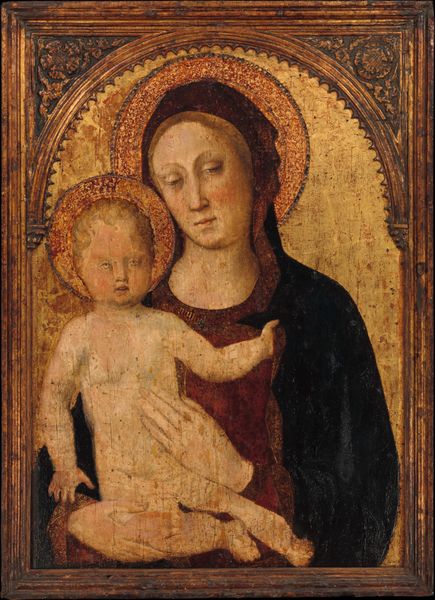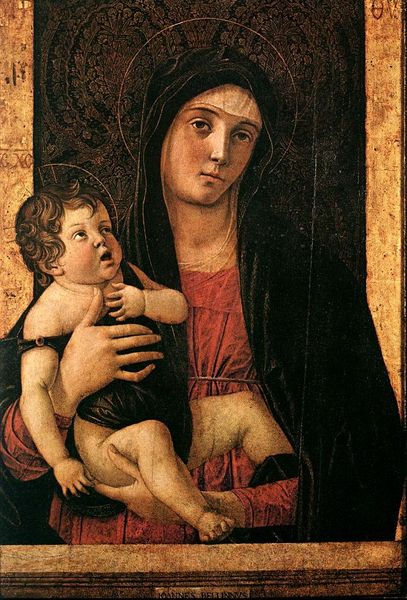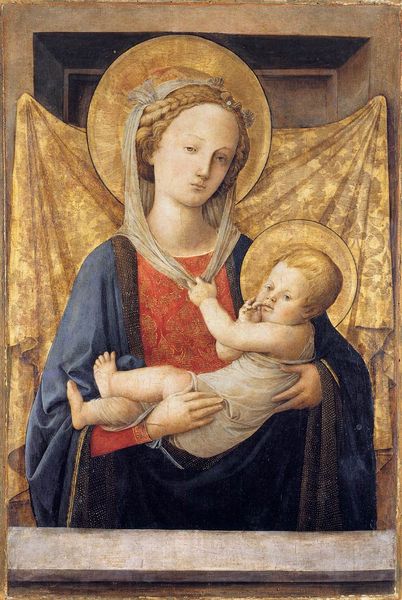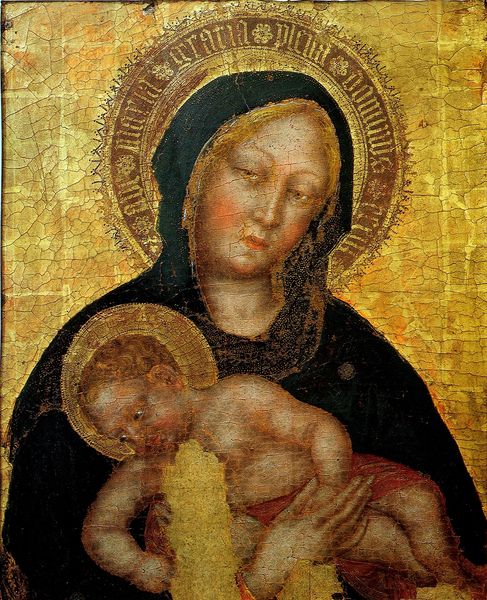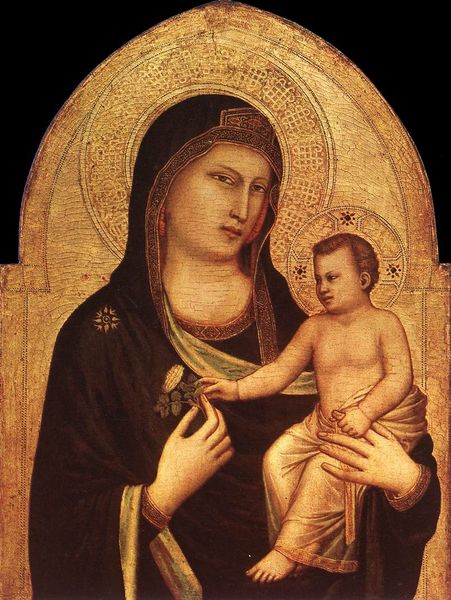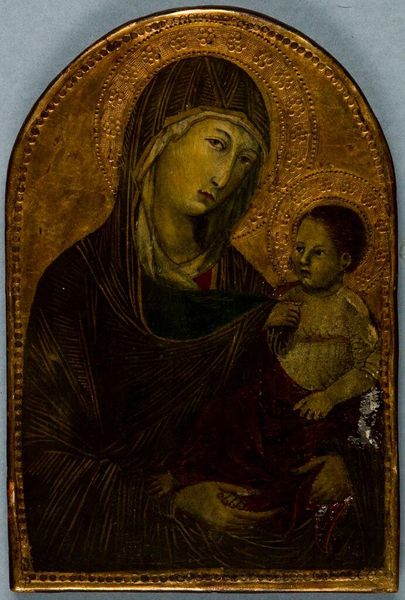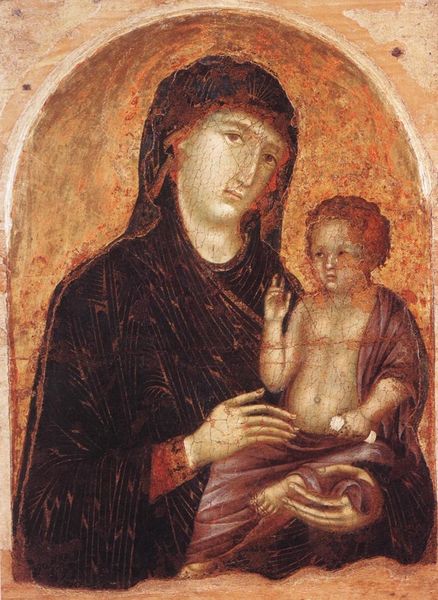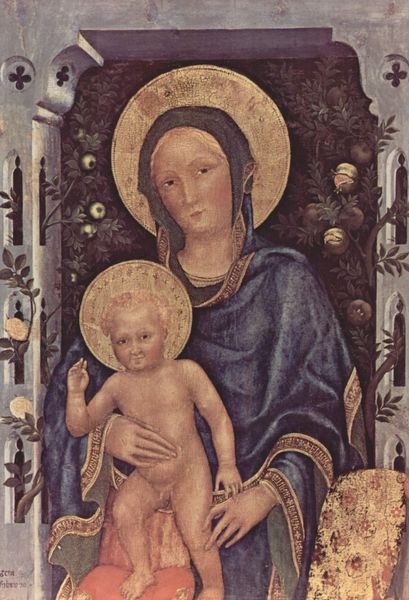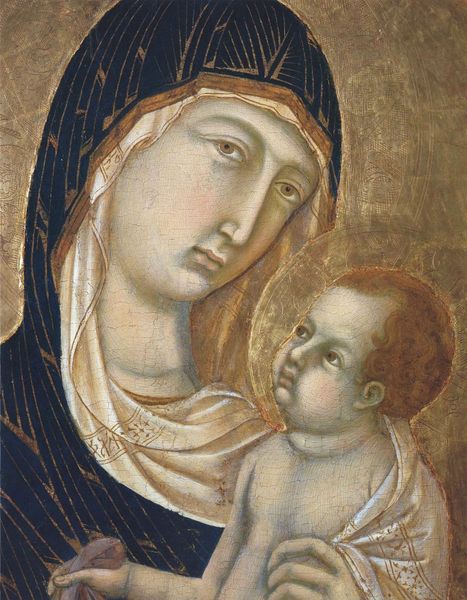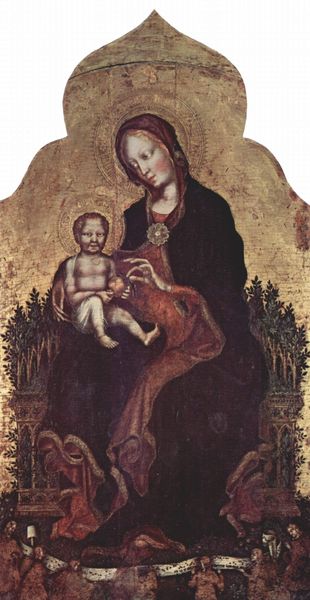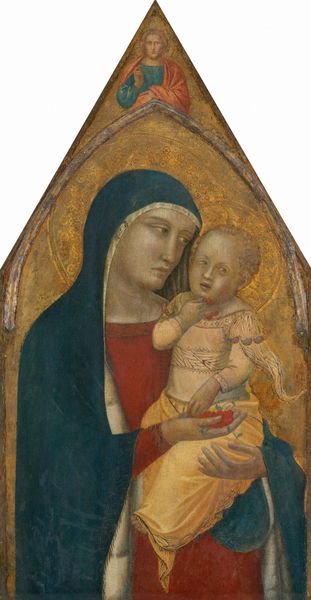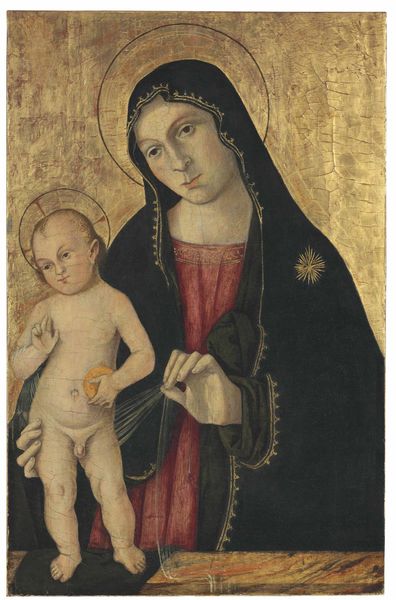
#
possibly oil pastel
#
oil painting
#
jesus-christ
#
child
#
acrylic on canvas
#
portrait head and shoulder
#
christianity
#
animal drawing portrait
#
facial portrait
#
portrait art
#
virgin-mary
#
watercolor
#
fine art portrait
#
christ
#
digital portrait
Dimensions: 55.2 x 77.5 cm
Copyright: Public domain
Curator: This is Jacopo Bellini's "Madonna and Child," painted around 1450, currently held at the Metropolitan Museum of Art. Editor: It’s striking how somber it feels. Despite the gold halos, there's a melancholy in Mary's gaze. You can see it in the child's serious expression too, which clashes with the image of innocence we so often see in these depictions. Curator: Right. It departs quite deliberately from earlier, more idealized versions. Think about the prevailing patriarchal structure of 15th century Venice, Bellini may be highlighting Mary's role within it, not merely as a vessel, but a mother facing complex emotional realities and societal constraints. It implicitly asks: What burdens and compromises is she bearing, represented in her shadowed features? Editor: I appreciate that reading. I immediately saw that potential. How her gaze shifts downwards speaks of grief and foreknowledge. However, I wonder if focusing so singularly on suffering reinforces an enduring trope about womanhood? I mean, doesn't the piece further burden the female body with pain? Curator: I think that tension *is* the point. Considering the Church’s social power at the time and its shaping of the visual narrative surrounding the holy family, we see a questioning emerge within the devotional image itself. Perhaps we might look to feminist theology to really unravel its layered critiques about the virgin mary as it shapes gender performativity within christian faith and patriarchy. Editor: Agreed, and the presentation definitely contributes. There's little to no setting or context provided beyond the figures. In removing a landscape or opulent fabrics, doesn't he make her a sort of political subject more easily available for viewers to question? Or perhaps a site of political contemplation. Curator: Precisely. Bellini stripped away distracting grandeur to force the audience into confronting the social implications and personal cost implicit in such a profound religious narrative. And the materiality contributes - there's a coarseness here unlike other images from that moment - the medium speaks almost like propaganda that attempts realism. Editor: It certainly does. Thanks to you, I'm seeing fresh nuances I might have otherwise overlooked in such an established subject! Curator: Likewise, considering our points in conjunction will offer today’s diverse audiences space to really interrogate their roles.
Comments
No comments
Be the first to comment and join the conversation on the ultimate creative platform.
